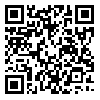BibTeX | RIS | EndNote | Medlars | ProCite | Reference Manager | RefWorks
Send citation to:
URL: http://mjiri.iums.ac.ir/article-1-3140-en.html
Background:
In this regard, in Iran a plan was developed and accordingly 52 indicators to measure equity in
health were developed and announced by the Ministry of Health in collaboration with other sectors.
This study aims to obtain a deeper understanding of the development of health equity indicators and
identify their implementation challenges and proposed solutions from the perspective of policy makers
and executives responsible for the indicators development and implementation.
To reduce the health inequity, it is necessary to measure and monitor these inequalities.Methods
Stakeholders involved in the development and implementation of these health equity indicators (at
national and provincial levels), and the review and analysis of relevant documents including meeting
minutes, working plans and working progress reports. Data were analyzed using a framework analysis
approach.
: In this qualitative study, data were gathered using semi-structured interviews with 15Results
the use of health equity indicators and process of indicators development, challenges of
development and implementation of the indicators and laying the groundwork for the establishment
of indicators. The findings showed that policy makers' viewpoint on concepts and indicators is different
from those of executives and their perceptions have little in common. The establishment of
indicators requires accurate stakeholders' understanding and accurate insight into the issue of equity
in health, political will, financing, training and empowerment of organization's employees, legal requirements,
and finally a clear action plan.
: Four main themes were identified, including the concept of equity in health and its importance,Conclusion
and executives. As the attention has been focused recently on the issue, in addition to knowledge
improvement, proper solutions with an intersect oral collaboration approach in order to tackle challenges
should be considered.
: The development of the indicators requires a shared understanding among policy makers| Rights and permissions | |
 |
This work is licensed under a Creative Commons Attribution-NonCommercial 4.0 International License. |





